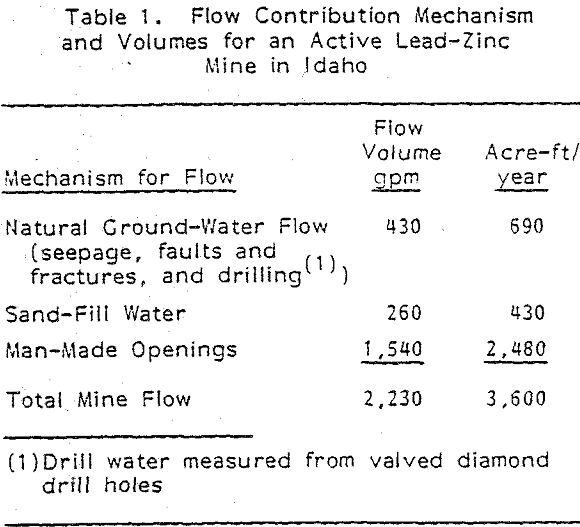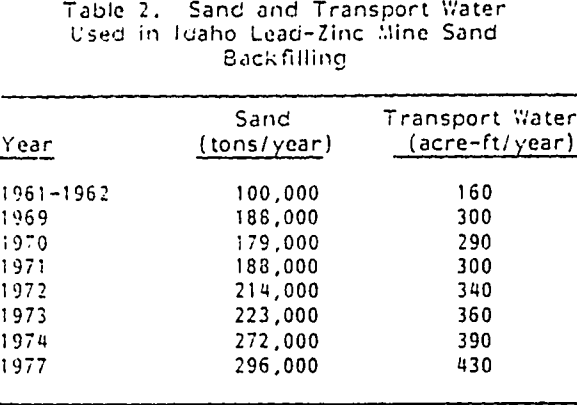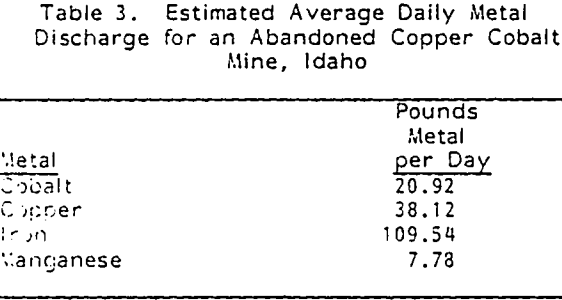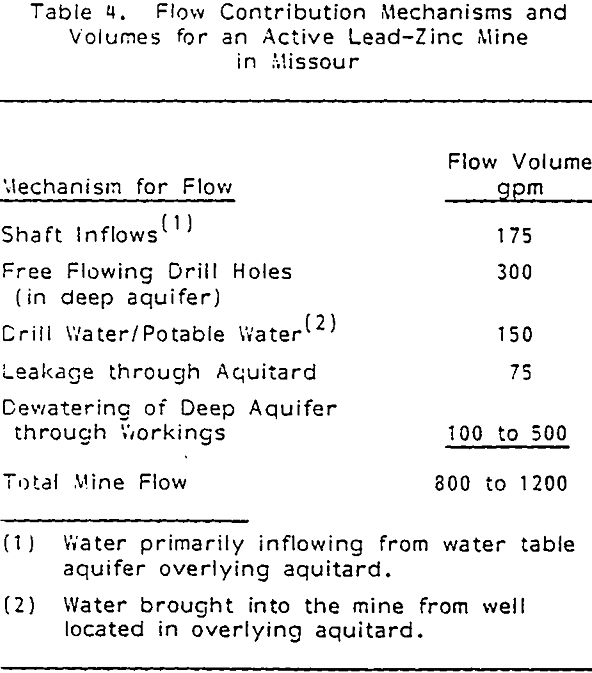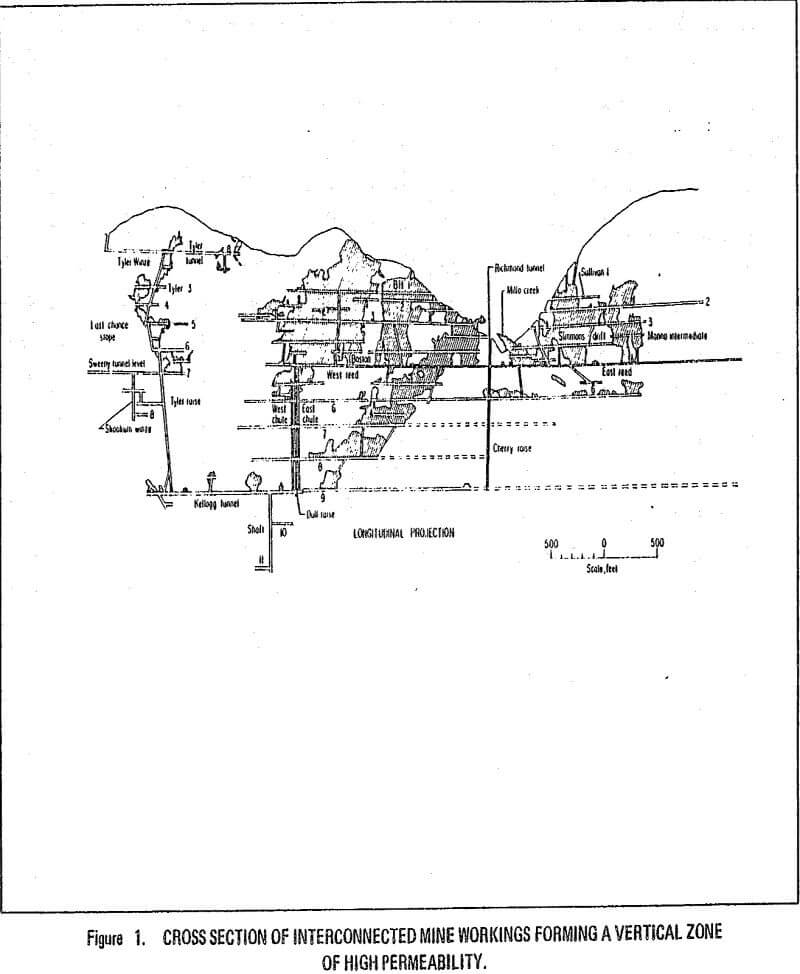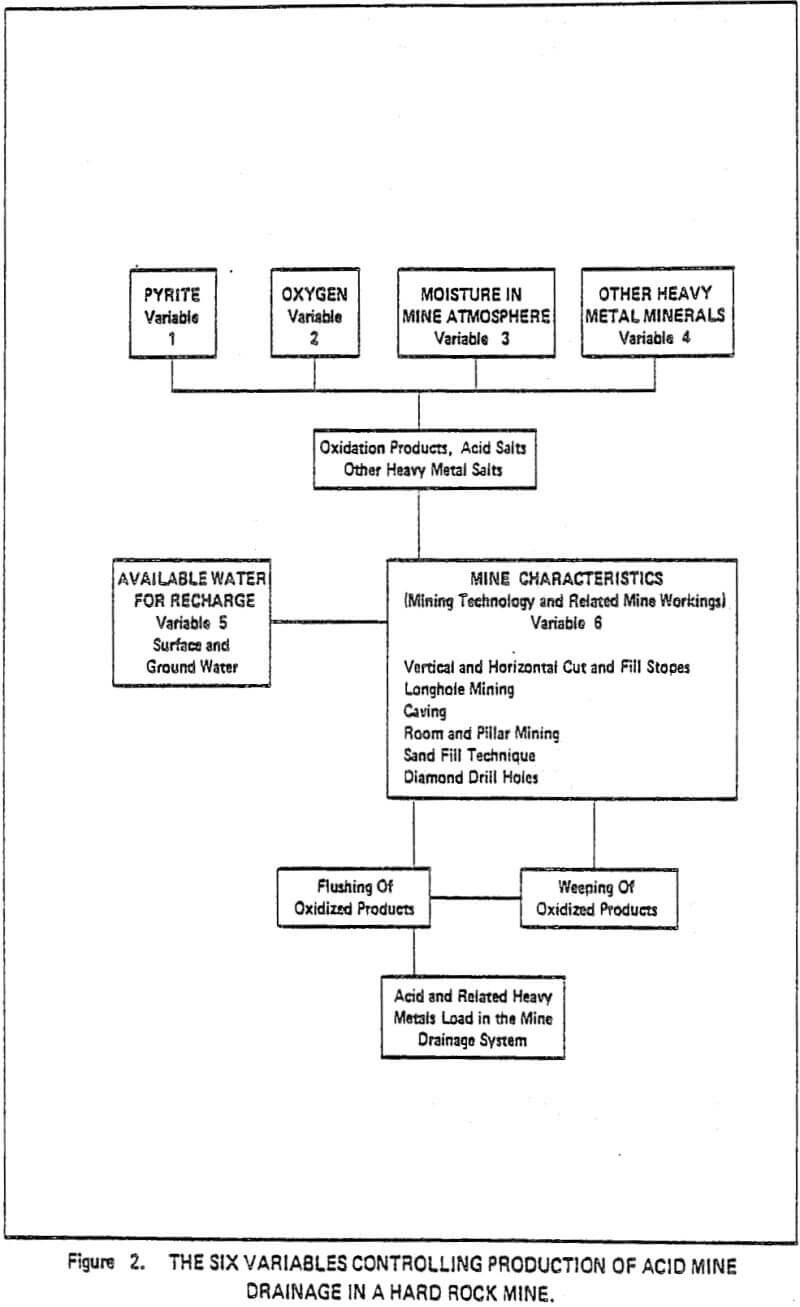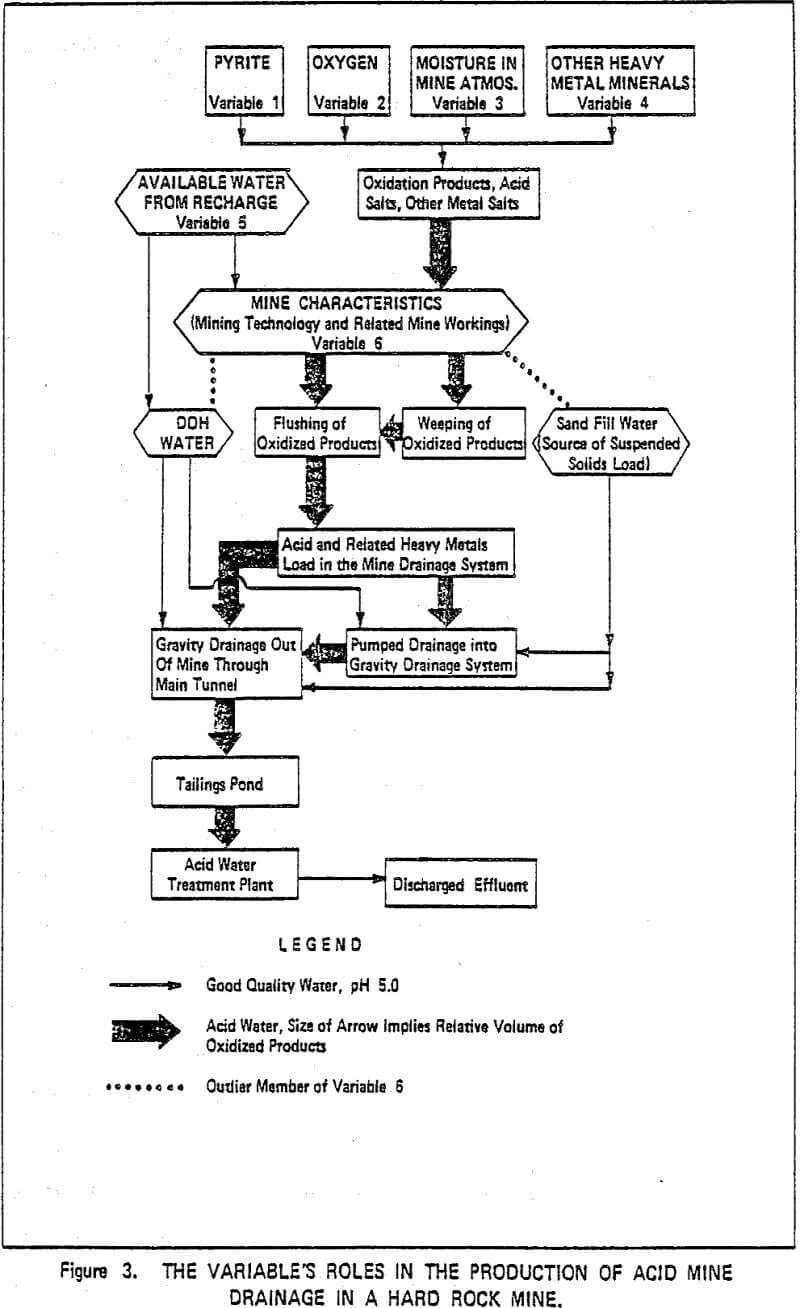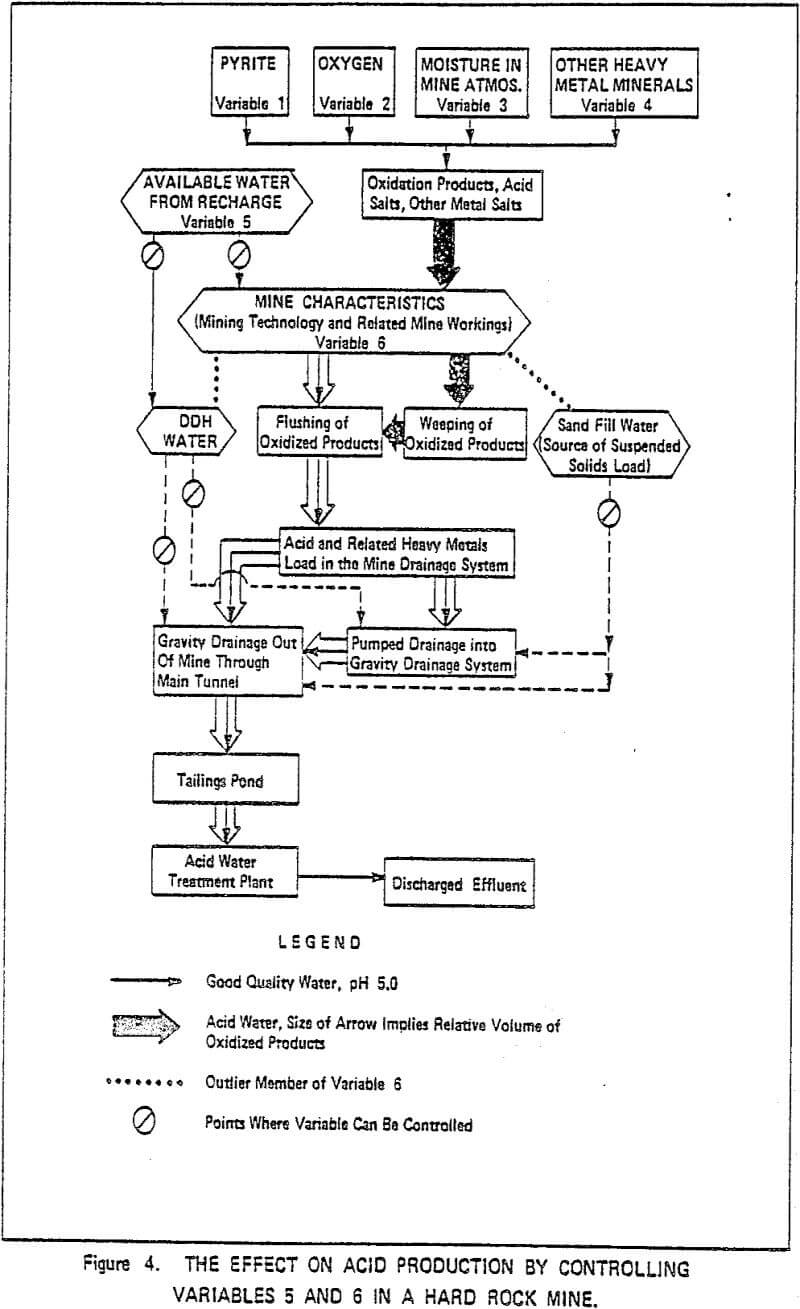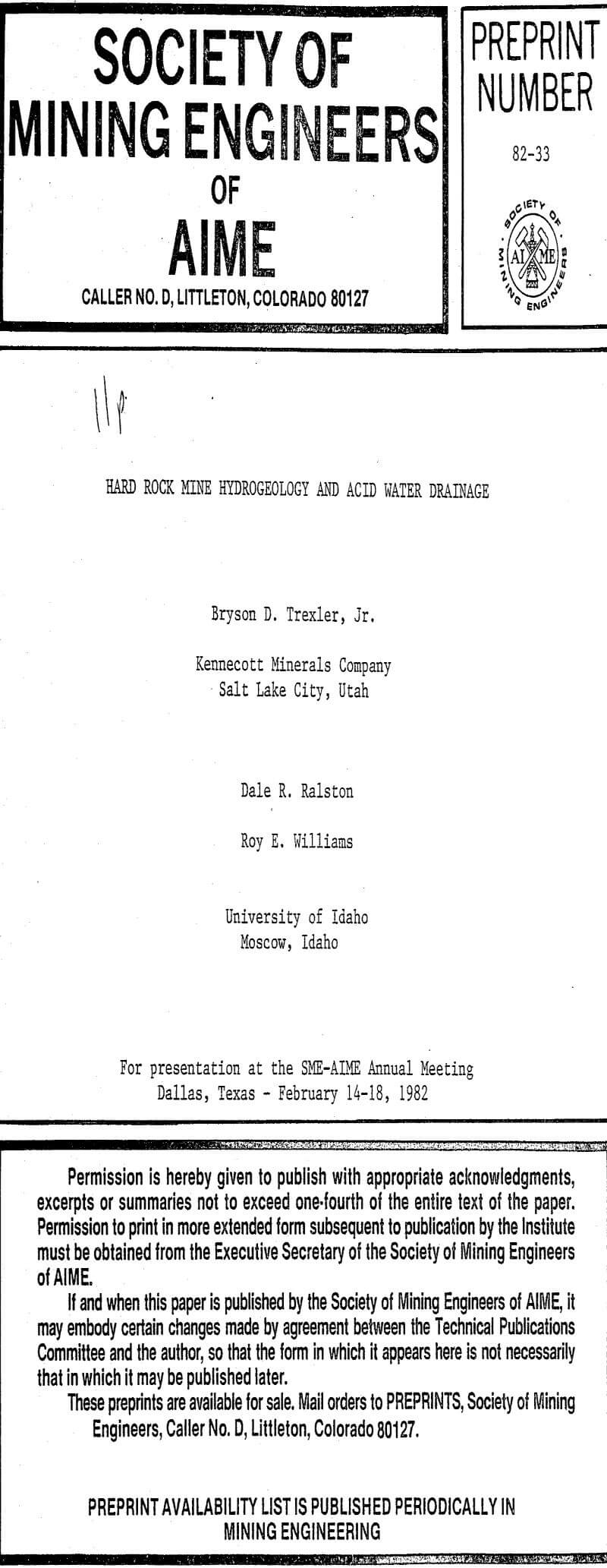Table of Contents
Man’s activity in developing, operating, and abandoning a mine often affects the quality of the ground water and surface water. Acid water drainage from mines is an example of an impact from mining that results in degradation of ground and surface water. New flow systems are created by the mining activity. The mining made possible complex chemical reactions that, with water movement, create a discharge of low pH, poor quality water. Remedies for these problems fall into two general solutions: 1) treatment of the end product and 2) reversal of some aspect of man’s disturbance of the natural system.
Acid Water Production
The potential to produce acid water is present where pyrite and other metal sulfides become exposed to the oxygen and moisture in the mine atmosphere. The metal sulfides oxidize and precipitation of such compounds of ferric sulfate, lead sulfate, zinc sulfate, calcium sulfate, and ferric hydroxide occur. Of these compounds, ferric sulfate from the oxidation of pyrite produces the greatest decrease in pH.
Some of the recharge moves through sulfide-rich waste, fill, and wall rock, especially in the older stopes, as it drains through the man-made workings. The initial flushing of these salts decreases the pH and increases metal and sulfate concentrations in the recharge. The acid produced from the oxidation of the pyrite helps to dissolve other metal minerals that may not normally oxidize such as chalcopyrite.
Hydrogeology of Hard Rock Mines
The occurrence and movement of water in a hard rock mine are controlled by five mechanisms. These mechanisms are: 1) natural ground-water flow (seepage through primary porosity), 2) faults, shear zones, and solution channels (secondary porosity), 3) diamond drill holes, 4) man-made openings (drifts, stopes, shafts, raises), and 5) water injected into the mine as potable water, drill water, and sand-fill water.
Three examples, two of active mines and one of an abandoned mine, are presented to show the mechanisms that supply water to the mine. The mechanism controlling the occurrence and movement of the water are explained in sufficient detail to demonstrate the importance of hydrogeologic input to mine planning.
One source of available water is from ground-water seepage through country rocks and from natural fracture systems. The county rock is relatively impermeable quartzites and siltite-argillites having extremely low primary hydraulic conductivity except where faulted or fractured.
Combining both the free flowing drill holes and the drill water used gives a volume of about 690 acre-ft per year. These values should be considered minimum potential groundwater flow values.
Mining Features Related to Water Movement in the Active Mine
As the mining activity extended downward from the upper levels, a vertical zone of high permeability was developed. The porosity is secondary, formed from multi-level stopes and other interconnections. As the water drains down the man-made openings, some of it moves through stopes containing ore and waste fill rich in pyrite. The water becomes acidic as it passes over the waste. The upper levels of the mine shown in Figure 1 constitutes a typical example of this vertical zone of high permeability.
Many of the old workings on the upper levels of the mine are located in two surface drainages. Much of the recharge to the mine occurs in these drainages. Most of the precipitation in the upper parts of the drainages is in the form of snow which generally remains well into the spring. The average snow water equivalent on April 1 is 33.5 in. The surface areas above the potential recharge areas consist of 3,205 acres. This gives a potential runoff (assuming that runoff is 50% of total water) of 4470 acre-ft.
Abandoned Hard Rock Mine
Even though the volume of acid water being discharged is small (about 74 gpm), there is no mine treatment system to neutralize the acid water. The 120 acre-ft of acid mine drainage and about 93 acre-ft of waste dump acid drainage degrade approximately 5700 acre-ft of good quality water critical to spawning salmon and steelhead.
The major portion of the discharge from the mine is surface water recharging which has been induced by the mining operation. Mine-related surface features which allow water to recharge the workings include raises, surface disturbed exploration areas, and open pits. Interconnected raises and stopes act as conduits for the water from level to level.
Need for Hydrogeologic Planning
Prevention, however, includes elimination of at least one of the six variables related to acid drainage production. These variables are:
- Oxygen
- Available pyrite
- Moisture in the mine atmosphere
- Other heavy metal minerals
- Availability of water
- Mine characteristics
As mentioned previously, variables 1 through 4 are not practically controllable. Variables 5 and 6 can be controlled to reduce or eliminate acid mine drainage. The understanding gained from the study of variables 5 and 6 in the mines allows design of methods for reducing present water problems and forecasting future problems.
